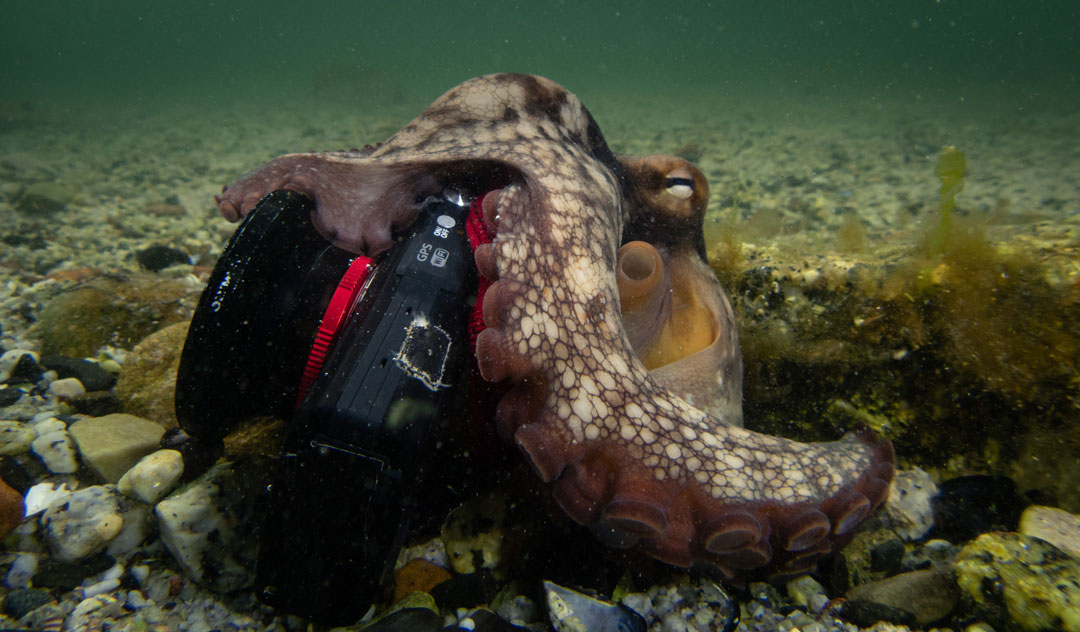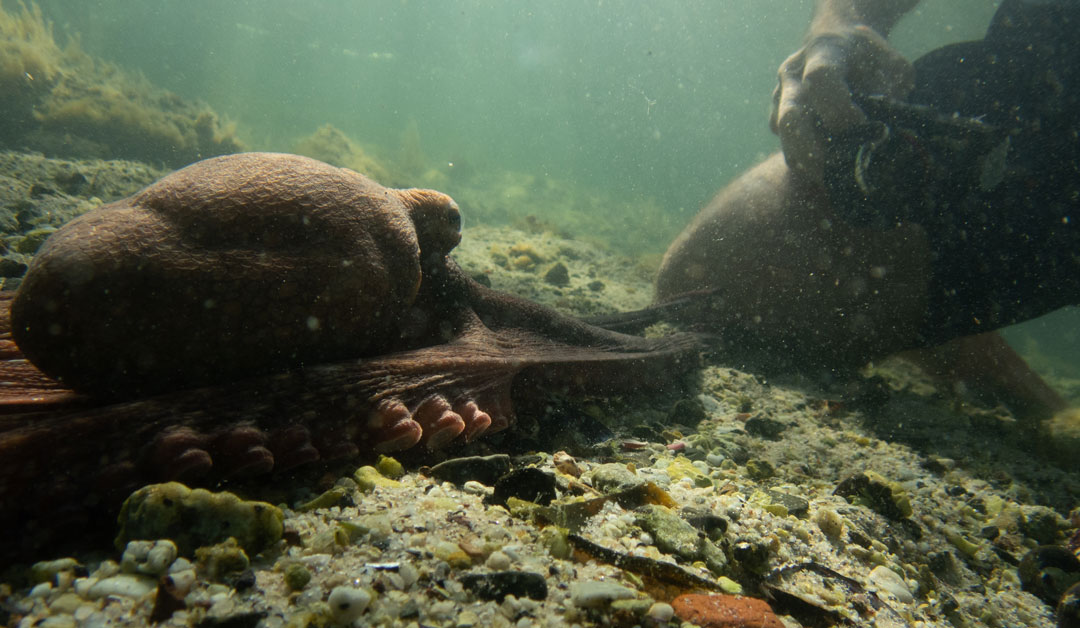I am a Seaforest Species
Nearly every night I sit at my desk sifting through what feels like endless pictures and videos of seaforest creatures. Trying to decipher not only what they are, but also what they do is perhaps the main part of my work for the 1001 Seaforest Species project. In this process I repeatedly feel like I am becoming the actual animal that I am trying to understand. What is going on in their mind, if they even have one? And what would it feel like to be this animal living in that vast, oceanic underwater forest doing your seaforest species thing? Sometimes in life you don’t realise that the answers to your most burning questions might reveal themselves in quite extraordinary and certainly unexpected ways. Sometimes you just need to listen to the teachers around you.
For the 1001 project I make long lists of species, organise all the information we accumulate as a team, and of course we spend as much time out in the kelp forest as our lives and the sea conditions allow. I do this work because I feel that the more I know about the animals in the Great African Seaforest, the more respect I can have for the million years of evolution unfolding in front of me, but as Sea Change Project we also do this work to help protect the seaforests and the oceans beyond. Because science tells us what to do, but emotions and stories are the drivers of change, we are hoping that by combining marine research and storytelling together, the disciplines will release their full power.

Photo © Dr Jannes Landschoff
Through the many years of daily skin diving and animal interactions, I have grown more aware of the profoundness of our human connection to nature. This connection shapes the way we see the world around us and the impact we have on the natural environment. It is frustrating and sad when that impact diminishes nature, exploiting her without giving back. But it is also uplifting and empowering to receive nature’s gifts with responsibility and care. As humans we can do this by looking after her and cherishing what she provides. Not just to take and exploit, but to give back by treating her respectfully.
One night when making my species lists and thinking of a clever way to number the animals we aim to tell stories about, my hand shifted to a fresh page in my notebook. I wrote down “#0101 I am a Seaforest Species”. In retrospect, I think what I did was make a list of the first 100 species, and realised that humans were very absent but need to be a part of the project. For a few minutes I stared at what I just wrote down as if I wouldn’t believe it myself. As if I didn’t trust my own words. Am I really a Seaforest Species? Am I allowed to call myself that? Have I been reciprocal enough with nature to feel like kin with her sons and daughters?

Photo © Craig Foster
The next day I went diving with Craig, as we had done so many times. Nothing seemed unusual. We encountered an octopus I had followed for many months already. Today she did something crazy. She came out of her den, grabbed Craig’s camera and pointed it back at us. We laughed when we looked at the footage. I realised that she had captured me in the weird, crouching position that I took on to be dead still while observing her.
Later that night, about 24h after writing that line into my notebook, I was sitting at my desk again when I received a call from Craig. He said he had an idea: today the octopus showed us that we too are a Seaforest Species. I was gobsmacked. I timidly looked at my open notebook in front of me. I said “wow, thats a great idea”. In that moment I couldn’t tell Craig that this had been on my mind for the whole day. I had not shared with him that I’d had that insight the night before the octopus filmed us. It felt too weird to put it into words and I was still building up the courage to do so.

Photo © Dr Jannes Landschoff
Sometimes there are strange, mystical things unfolding. The scientists in us can call these inexplicable things ‘coincidences’. Others might say “Wow, what a strange synchronicity”. The story of the octopus filming us was certainly some piece of magic! We cherish and celebrate these interactions, with deep gratitude that as humans we can have these profound relationships with the natural world. They are gifts of nature. And like with any gift, it comes with the responsibility to be handled respectfully and carefully.
The page in my notebook with us humans as a Seaforest Species is still blank. I feel that it is our responsibility to fill it with our positive actions, to tell a story of how we as humans treat the Great African Seaforest respectfully and reciprocally, so that this underwater magic forest kingdom can continue to provide its many gifts to all of us seaforest species.
In the very moment the octopus filmed us I admittedly did not even realise that the camera was actually rolling. It was only afterwards when I looked at myself in the footage that I suddenly felt extremely humbled. The teacher that taught so many. She taught us again by showing us how it feels to be a seaforest species, a child of the mother of mothers. I felt accepted and at peace. And as seaforest species I am not here to harm or exploit, nor to take more than I would ever need. I am here to listen and learn, to give back through my research, knowledge, and through the stories we share.
